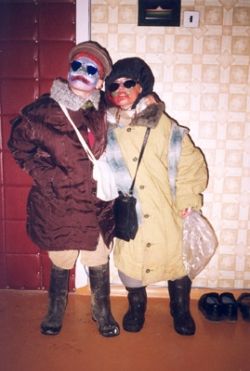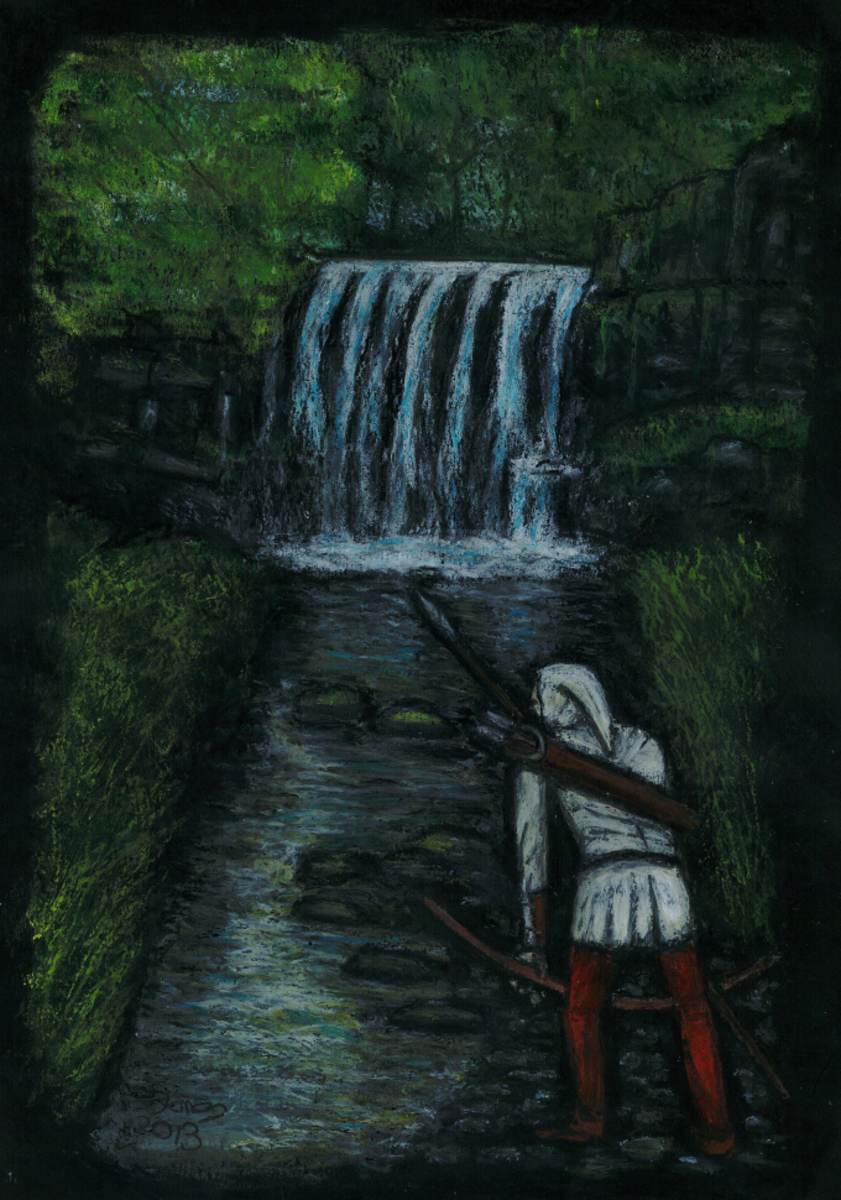Mardipäev: the Estonian Halloween.

Mardipäev
That's it, I'm going to introduce you to a very special holiday which is celebrated here, in Estonia. The holiday is placed in calendar on 10th of November and the idea of this holiday is kind of similar to one of that global Halloween, but I think there are some important differences in the history of this holiday and the meaning of this day.
Feel free to try different ways of pronouncing the word "Mardipäev", I am sure it can be quite entertaining for a person, who is not familiar with Estonian language. I'll explain you the structure and meaning of that word a little bit later.

What kind of holiday is Mardipäev?
A short overview containing basic things you would like to know about this special day.
The true point of Mardipäev has changed over ages and today this holiday differs quite much from what it used to be centuries ago. Nevertheless, it still remains one of the most important autumn holidays here in Estonia.
I think that nowadays Mardipäev is a kind of children's holiday. Just like during the Halloween, kids go trick-or-treating, but the rituals performed during the trick-or-treating are different from Halloween's customs.
The reason why children do like this day so much is that they receive an opportunity to get a lot, a lot of sweets during one evening and of course, it's quite a bit thrilling to perform in front of strange people in order to earn a reward. That's why kids start to prepare themselves long before that day arrives. Preparations for this day include learning songs and poems by heart and constructing costumes for trick-or-treating sessions.
Continue reading to get to know more about rituals and customs of that special day!
The history of Mardipäev.
Where did this holiday come from?
From the beginning of it's history, Mardipäev was closely related to spiritualism and death. It wasn't about sacrificing people or cattle or summoning demons or whatever. Ancient Estonians believed, that in autumn, when the daytime is shorter and it's cold and dark most of the time, the spirits of deceased ancestors return from the otherside and visit their relatives. In order to welcome them, ancient Estonians decked the table and invited spirits over to a meal, calling them using their real names. It was also believed that during this period, when spirits are on the move, a death fairy called "Mardus" appeared. That's why on this day it was restricted to do perform many house chores that produce noise. Spirits required peace, so people waited for them to arrive in a calm and silent atmosphere.
An Estonian male name "Mart" has derived from the name of that fairy. With "päev" meaning "day" in Estonian, it becomes clear where did this day get it's name from. Mardipäev usually marked the end of the time of spirits, it was believed that after this day spirits return to the otherside and so did the death fairy Mardus.
The ancient rituals.
What did people do on this day back in ancient times?
On Mardipäev, people disguised themselves using different natural materials like hay and branches and old and dirty clothes. It was important to disguise oneself as well as possible, in order to stay anonymous. When people were done with the costumes, different musical instruments were taken with and the company headed out to visit other people living nearby. People participating in the event were usually young men, they were called "Marts" (a plural form of "Mart") after the name of the fairy. However, female Marts were also present. A word "Mardisandid" was also quite spread, where "Mardi" is a form of "Mart" and "sandid" means "disabled". The last part points to a reason why Marts usually looked ugly and helpless.
One of the most essential part of celebration was singing. Mart's had a huge inventory of different songs and poems which had a special meaning. There was a starting song that was sung before entering a strange house:
Laske mardid sisse tulla,
mardid tulnud kaugeelta,
läbi pika pilliroo,
läbi kare kasteheina!
Mardi jalad valutavad,
mardi küüned külmetavad.
Mart pole tulnud saama pärast,
mart tuli vilja õnne pärast!
I know that you haven't understood a single word, I'll translate a general message of that song for you.
The song says that Marts have come from far away, they are freezing out there and their feet are hurting. They haven't come in order to receive something, they have come to share the blessing for a rich harvest.
After being invited in, Marts started to sing songs and dance, scaring away dark forces and attracting blessings from fairies. It was thought that Marts bring benefits to agriculture and animal breeding. In order to spread the blessing grain and beans were sometimes thrown around the house. Marts were always welcome in any house and were rewarded kindly for their performance: the family, which was visited by the Marts, offered them different food like meat, honey, apples, fresh bread.
Upon leaving Marts wished a good harvest to father, a good flock to mother, a good groom to daughters and a good bride to sons of the family.

The rituals today.
That's how it's celebrated nowadays.
In general, the main idea of the rituals remains the same. However, I think that people don't pay much attention to true meaning of this day. It's all about fun. I remember myself back in my childhood preparing for that day. Me and my friends started to make masks and look for suitable clothes long before the Mardipäev. I also remember myself collecting different poems and riddles in order to be able to entertain people who will be inviting me in.
When the long-awaited day was finally here ( note that celebration took place a day before, on November 9th), we used to gather in a group and begin our adventure. I live in a small hamlet, so everyone knows everyone here. People are quite kind towards Marts in the place where I live, because everybody is familiar with each-other, so it's safe to invite the people you know in. After attending the Mardipäev's celebrations for a few years, we were quite aware of families, who are especially kind towards the Marts, so we used to visit their homes first. After being invited in, we started to perform songs and poems, adding some riddles and jokes. I remember having quite large amounts of sweets in my sack by the end of the evening. It made me want to take part in celebrations next year too. I think I stopped participating in this event at the age of 13 or 14, because I was just too old for that.
Nowadays, the attitude towards the Marts varies greatly. There are people, who like that day and enjoy the celebrations, inviting the Marts kindly in and rewarding them after having seen the performance. However, there are some people who don't like all that noise and show, they refuse to let the Marts in and simply ignore them. Usually these ones are older people, who don't like loud celebrations and demand peace and silence.



